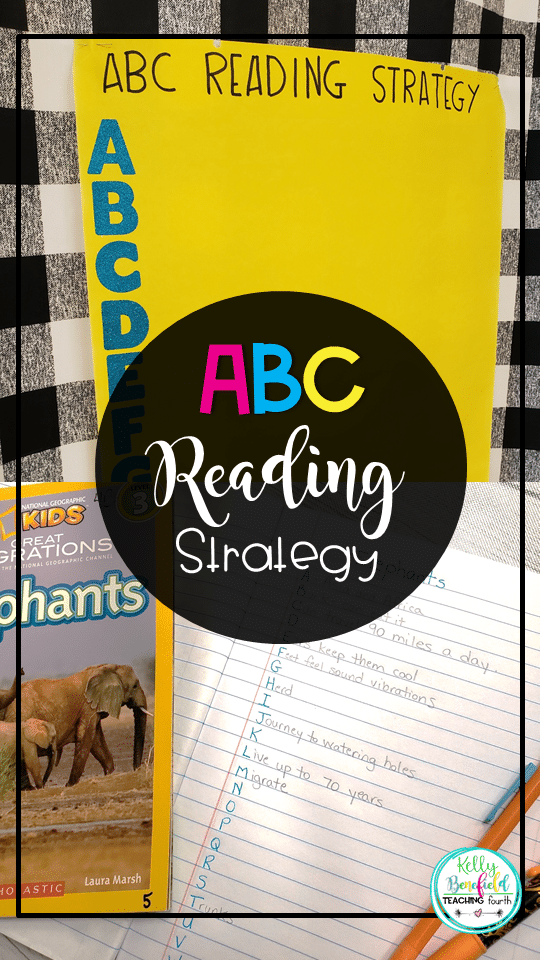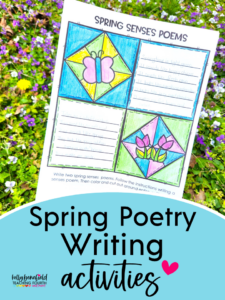
Chances are, you are familiar with the ABC Brainstorm Strategy. This reading strategy is often used as a “before” activity to help students activate their prior knowledge, but have you ever considered other ways this strategy can be utilized? Find some creative ways to use the ABC Brainstorm Strategy in your classroom.
What is the ABC Brainstorm Strategy?
Good reading strategies effectively help students engage with a text and increase student learning. A great reading strategy is not only engaging but is also flexible. It connects the reader to the text and can be used in a variety of ways.
Our school system has placed a lot of emphasis on using before, during, and after reading strategies. “Before” reading strategies activate prior knowledge before diving right into the lesson or text. “During” activities help students stay focused during the lesson. They help them make connections and monitor understanding. “After” reading strategies provide students with the opportunity to reflect, summarize, and respond to the text or to the learning. One of my favorite reading strategies to increase student learning is the ABC Reading Strategy.
The ABC Reading Strategy, or ABC Brainstorm Strategy, is one of my favorite reading strategies not only because it is very engaging for students, but also because it can easily be incorporated into almost any lesson with very little prep.
The ABC Brainstorm Strategy is designed to be a before the activity to activate prior knowledge about a topic that is going to be studied. The idea is simple. After providing the topic that will be studied, students list all of the letters of the alphabet down the side of the paper, leaving room to write a word or a phrase related to the topic that begins with each letter.
Give students a minute or two to write as many words and phrases on their own. Students may write the words in no particular order. They are not required to think of a word for one letter before moving to the next.
Give students enough time to think of a lot of ideas. Once students have worked on the activity on their own, allow students to pair up or get with a group to complete the missing letters. While the ABC Brainstorm Strategy was designed to use as a before activity, I personally prefer using this strategy during, or after reading.

ABC Brainstorm Strategy: Using it as a “Before” Activity
Using the ABC Brainstorm Strategy as a before-reading strategy can help students activate prior knowledge about a topic and build knowledge through discussion before reading. It helps students focus on the topic that will be studied.
How Does This Work?
Simply present a topic for students to brainstorm. Perhaps students will be reading about Pythons in the Everglades. To activate prior knowledge and prepare for this study, a teacher might have students list animals and other information that students know about the Everglades.
Using each letter of the alphabet, students will list words or phrases related to the Everglades. It is important to let students know that it is okay if they don’t use all letters. After a few minutes of writing, allow students to share in small groups and combine ideas to fill in empty spaces on their own papers.
ABC Brainstorm Strategy: Using It as a “During” Activity
An ABC chart can also be used as a during-reading strategy to help students engage with a text. For example, while reading about garbage in the oceans, students may use an ABC chart to identify important facts and details in the text as they read. Students may write words, phrases, or sentences from the text. (This can be your discretion.) Using the ABC strategy in this way helps students connect and interact with the text while monitor understanding.
ABC Brainstorm Strategy: Using it as an “After” Activity
Using the ABC Reading Strategy as an after-reading strategy allows students to reflect on the content of a lesson. Students may use an ABC chart to help them summarize important facts and information learned in a lesson. Using the same format as above, students simply list all of the letters of the alphabet down a page. Students can then write important facts and information that they learned about the topic beginning with each letter of the alphabet.

Alternative Ideas for ABC Brainstorm Strategy
For even more flexibility with the ABC Brainstorm Strategy, this activity can be changed up to meet the needs of your students. Over the years I have found that giving elementary students the entire alphabet can be overwhelming. For this reason, I prefer to only give part of the alphabet.
For example, I may only give my students the letters A-F, or G-N (any group of letters will work). This can help make this strategy a little more manageable for students and less overwhelming. You may even assign different groups or tables in your classroom different groups of letters of the alphabet. For example, table 1 may have A-F. Table 2 may get G-L. Table 3 is assigned M-Q, and so on.

Why This Strategy is Beneficial









